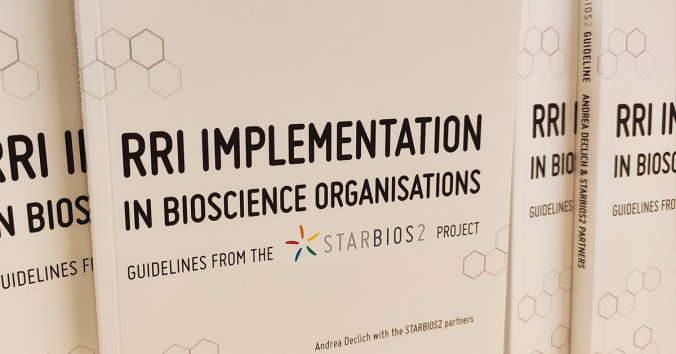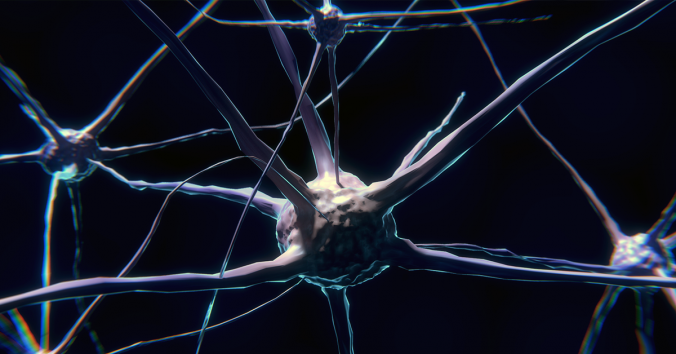The STARBIOS2 project has carried out its activities in a context of the profound transformations that affect contemporary societies, and now we are all facing the Covid-19 pandemic. Science and society have always coevolved, they are interconnected entities, but their relationship is changing and it has been for some time. This shift from modern to so-called postmodern society affects all social institutions in similar ways, whether their work is in politics, religion, family, state administration, or bioscience.
We can find a wide range of phenomena connected to this trend in the literature, for instance: globalization; weakening of previous social “structures” (rules, models of action, values and beliefs); more capacity and power of individuals to think and act more freely (thanks also to new communication technologies); exposure to risks of different kinds (climate change, weakening of welfare, etc.); great social and cultural diversification; and weakening of traditional boundaries and spheres of life, etc.
In this context, we are witnessing the diminishing authority and prestige of all political, religious, even scientific institutions, together with a decline in people’s trust towards these institutions. One example would be the anti-vaccination movement.
Meanwhile, scientific research is also undergoing profound transformations, experiencing a transition that has been examined in various ways and called various names. At the heart of this transformation is the relationship between research and the society it belongs to. We can observe a set of global trends in science.
Such trends include the increasing relationship between universities, governments and industries; the emergence of approaches aimed at “opening” science to society, such as citizen science; the diffusion of cooperative practices in scientific production; the increasing relevance of transdisciplinarity; the increasing expectation that scientific results have economic, social, and environmental impacts; the increasingly competitive access to public funds for research; the growing importance attached to quantitative evaluation systems based on publications, often with distorting effects and questionable results; and the emergence on the international economic and technological scene of actors such as India, China, Brazil, South Africa and others. These trends produce risks and opportunities for both science and society.
Critical concerns for science includes career difficulties for young researchers and women in the scientific sector; the cost of publishing and the difficulties to publish open access; and the protection of intellectual property rights.
Of course, these trends and issues manifest in different ways and intensities according to the different political, social and cultural contexts they exist in.
After the so-called “biological revolution” and within the context of the “fourth industrial revolution” and with “converging technologies” like genetics, robotics, info-digital, neurosciences, nanotechnologies, biotechnologies, and artificial intelligence, the biosciences are at a crossroads in its relationship to society.
In this new context, more and more knowledge is produced and technological solutions developed require a deeper understanding of their status, limits, and ethical and social acceptability (take organoids, to name one example). Moreover, food security, clean energy transition, climate change, and pandemics are all challenges where bioscience can play a crucial role, while new legal, ethical, and social questions that need to be dealt with arise.
These processes have been running for years, albeit in different ways, and national and international decision-makers have been paying attention. Various forms of governance have been developed and implemented over time, to re-establish and harmonize the relationship between scientific and technological research and the rest of society, including more general European strategies and approaches such as Smart Specialization, Open Innovation, Open Science and Responsible Research and Innovation as well as strategies related to specific social aspects of science (such as ethics or gender).
Taking on an approach such as RRI is not simply morally recommendable, but indispensable for attempting a re-alignment between scientific research and the needs of society. Starting from the areas of the life of the scientific communities that are most crucial to science-society relations (The 5+1 RRI keys: Science education, Gender equality, Public engagement, Ethics, Open access, and the cross-cutting sixth key: Governance) and taking the four RRI dimensions into account (anticipation, inclusiveness, responsiveness, and reflexivity) can provide useful guidance for how to activate and drive change in research organisations and research systems.
We elaborate and experiment, in search of the most effective and most relevant solution. While at the same time, there is a need to encourage mainstreaming of the most substantial solutions, to root them more deeply and sustainably in the complex fabric of scientific organisations and networks. Which leads us to ask ourselves: in this context, how can we mainstream RRI and its application in the field of bioscience?
Based on what we know, and on experiences from the STARBIOS2 project, RRI and similar approaches need to be promoted and supported by specific policies and contextualised on at least four levels.
- Organizational contextualization
Where mainstreaming takes place through the promotion of a greater embedment of RRI, or similar approaches, within the individual research organizations such as universities, national institutes, private centres, etc. - Disciplinary or sectoral contextualization
Where mainstreaming consists of adapting the responsible research and innovation approach to a specific discipline − for example, biotechnology − or to an entire “sector” in a broad sense, such as bioscience. - Geopolitical and cultural contextualization
Where mainstreaming aims to identify forms of adaptation, or rather reshaping, RRI or similar approaches, in various geopolitical and cultural contexts, taking into account elements such as the features of the national research systems, the economy, territorial dynamics, local philosophy and traditions, etc. - Historical contextualization
Where RRI mainstreaming is related to the ability of science to respond to the challenges that history poses from time to time − and of which the COVID-19 pandemic is only the last, serious example − and to prevent them as much as possible.
During the course of the STARBIOS2 project, we have developed a set of guidelines and a sustainable model for RRI implementation in bioscience research institutions. Over the course of 4 years, 6 bioscience research institutions in Europe, and 3 outside Europe, worked together to achieve structural change towards RRO in their own research institutions with the goal of achieving responsible biosciences. We were looking forward to revealing and discussing our results in April, but with the Covid-19 outbreak, neither that event nor our Cape Town workshop was a possibility. Luckily, we have adapted and will now share our findings online, at our final event on 29 May. We hope to see you there.
For our final remark, as the Covid-19 pandemic is challenging our societies, our political and economic systems, we recognise that scientists are also being challenged. By the corona virus as well as by contextual challenges. The virus is testing their ability to play a key role to the public, to share information and to produce relevant knowledge. But when we go back to “normal”, the challenge of changing science-society relations will persist. And we will remain convinced that RRI and similar approaches will be a valuable contribution to addressing these challenges, now and in the future.

Written by…
Daniele Mezzana, a social researcher working in the STARBIOS2 project (Structural Transformation to Attain Responsible BIOSciences) as part of the coordination team at University of Rome – Tor Vergata.
This text is based on the Discussion Note for the STARBIOS2 final event on 29 May 2020.

The STARBIOS2 project has received funding from the European Union’s Horizon 2020 research and innovation programme under grant agreement No 709517. The contents of this text and the view expressed are the sole responsibility of the author and under no circumstances can be regarded as reflecting the position of the European Union.
We recommend readings














Recent Comments